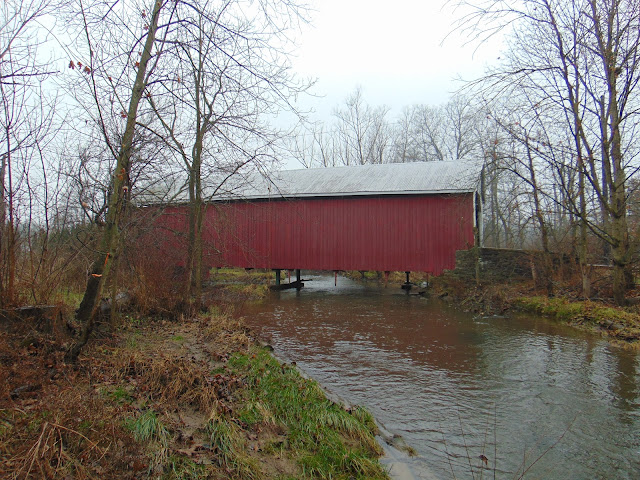The Hassenplug Covered Bridge is a 70 foot long covered bridge located over the Buffalo Creek in Mifflinburg, Pennsylvania. The bridge was named for the Hassenplug family, who had a home nearby to the bridge. Built in 1825, it is believed to be one of the oldest remaining historic covered bridges in the United States, with only the Hyde Hall Covered Bridge in Upstate New York possibly being older as it was built the same year. The covered bridge was built with a Burr arch truss design.
The covered bridge was restored or modernized in 1959. During the restoration process, the wooden deck was replaced with steel grating and a pier was added to allow for heavier vehicles to cross. The bridge is still open to traffic today on North Fourth Street in Mifflinburg, allowing for a weight limit of 6 tons. There is a small parking area at the south end of the bridge, which is also shared by the one mile long Koons Trail.
How to Get There:
Sources and Links:
Bridgehunter.com - Hassenplug Covered Bridge 38-60-03
Valley Girl Views - The Hassenplug Covered Bridge
PA Bucket List - Exploring the Hassenplug Covered Bridge in Union County
Update Log:
February 24, 2022 - Crossposted to Quintessential Pennsylvania - https://quintessentialpa.blogspot.com/2022/02/hassenplug-covered-bridge.html





Comments